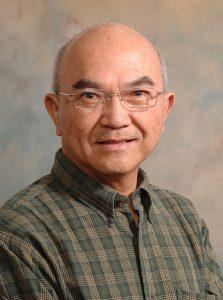
Tsung Ping Su, Ph.D.
Senior Investigator
Integrative Neuroscience Branch, Cellular Pathobiology Section
NIDA
Research Topics
The Cellular Pathobiology section examines the cellular and molecular biological mechanisms whereby addictive processes might be formed. Specifically, the laboratory studies how psychostimulants might utilize signaling molecules at the protein synthesizing organelle the endoplasmic reticulum (ER) and the cellular powerhouse mitochondria (MITO) to alter neuronal infrastructures and morphometries that ultimately favor the formation of addictive processes. The laboratory uses three levels of living systems to address and test relevant hypotheses: cell lines, primary neuronal systems, and rodents. The rodent studies are from collaborative efforts with other sections at the institute. The techniques employed in the laboratory include molecular biological manipulation of proteins, FRET, Ca2+ dynamics assays and imaging, protein trafficking studies with fluorescence imaging and pulse-chase experiments, neuronal morphometric studies with confocal microscope, and bio-signal engineerings. The laboratory currently focuses on a protein called the sigma-1 receptor (Sig-1R) that resides specifically at the ER-MITO interface of cells and is implicated in alterations of neuronal structures and in the addiction of cocaine and methamphetamine. Ongoing projects include: (1) mechanisms of action of Sig-1Rs as ligand-regulated molecular chaperones in bioenergenetics and cell survival; (2) roles of Sig-1Rs in lipid raft formation; (3) metabolic engineering on intracellular signaling pathways; (4) roles of Sig-1Rs in the regulation of ER stress; (5) Sig-1R regulation of dendritic spine and axon formations in the brain; and (6) roles of Sig-1Rs in the self-administration of cocaine and methamphetamine in the rat.
Selected Publications
- Su TP, London ED, Jaffe JH. Steroid binding at sigma receptors suggests a link between endocrine, nervous, and immune systems. Science. 1988;240(4849):219-21.
- Hayashi T, Su TP. Sigma-1 receptor chaperones at the ER-mitochondrion interface regulate Ca(2+) signaling and cell survival. Cell. 2007;131(3):596-610.
- Tsai SY, Chuang JY, Tsai MS, Wang XF, Xi ZX, Hung JJ, Chang WC, Bonci A, Su TP. Sigma-1 receptor mediates cocaine-induced transcriptional regulation by recruiting chromatin-remodeling factors at the nuclear envelope. Proc Natl Acad Sci U S A. 2015;112(47):E6562-70.
- Su TP, Su TC, Nakamura Y, Tsai SY. The Sigma-1 Receptor as a Pluripotent Modulator in Living Systems. Trends Pharmacol Sci. 2016;37(4):262-278.
- Lee PT, Liévens JC, Wang SM, Chuang JY, Khalil B, Wu HE, Chang WC, Maurice T, Su TP. Sigma-1 receptor chaperones rescue nucleocytoplasmic transport deficit seen in cellular and Drosophila ALS/FTD models. Nat Commun. 2020;11(1):5580.
Related Scientific Focus Areas
This page was last updated on Friday, November 2, 2018

